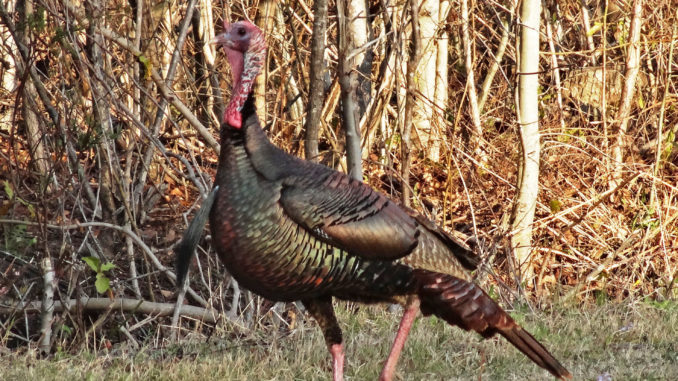
Number of poults surviving is 32 percent down from 2012 levels.
The bad news for the South Carolina turkey population, and turkey hunters, just keeps getting worse. The S.C. Department of Natural Resources’ summer brood survey has been released, and the 2013 recruitment is the worst on record.
Charles Ruth, an SCDNR biologist, said recruitment of turkeys this past summer was down 32 percent over 2012 levels, with a statewide average of 1.3 poults per hen.
“Recruitment ratio is a measure of young entering the population based on the number of hens in the population,” Ruth said. “This figure was driven by a high percentage of hens (66 percent) that had no poults at all by late summer. Both recruitment ratio and percentage of hens with no poults were the lowest since the survey began in 1982.That is discouraging news for the turkey population and will likely impact harvest in 2014 as well as 2015. There simply will be fewer one year old gobblers in 2014 and less two-year olds in 2015.”
Ruth said reproduction in turkeys had been somewhat better in recent years, with 2010 recruitment being good and 2011 being decent. The numbers dropped some in 2012 but were not considered poor.
“But 2013 hits rock bottom since data has began being recorded in 1982,” he said. “The average brood size of 3.9 poults remained relatively consistent, which is good, but that was totally offset by the number of hens with no poults. It appears that reproduction was poor in most of the state.”
Ruth said SCDNR has conducted its summer turkey survey since 1982, involving agency biologists, technicians, conservation officers and volunteers from other natural resource agencies and the general public. All keep records of the gender and number of turkeys they see over a period of several summer months.
“The wild turkey recruitment decreased in 2013 is likely due to record rains statewide this summer,” Ruth said. “Rain and/or cooler weather at the wrong time can have very negative impact on successful recruitment of turkeys and that seems to be the case this year. Wild turkeys very susceptable to significant fluctuations in reproduction and recruitment. During nesting and brood-rearing season, most of the state saw unprecedented rainfall that began late in the spring and continued throughout most of the summer.”
Ruth said the impact on the turkey hunting follows the pattern of recruitment.
“Spring harvest trends have followed the trends in reproduction in recent years, with harvest figures being better in 2012 due to better reproduction in 2010 and 2011,” he said. “The harvest dropped in 2013 as recruitment was down in 2012, and with reproduction way down in 2013 the outlook is not terribly encouraging. One positive note is the gobbler-to-hen ratio remained good, with a statewide average of 0.70, about average for the last few years. Many experts believe that when gobbler to hen ratios get below 0.5, the quality of hunting can be impacted because hens are extremely available, which affects gobbling and responsiveness to calling by hunters.
“The bottom line is, the state’s turkey population remains about 25 percent below record levels of 10 years ago,: Ruth said. “We need better reproduction for several years to get the population back up. That is the nice thing about turkeys; given the right conditions, they can naturally bounce back in a short period of time.”


Be the first to comment